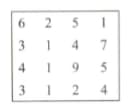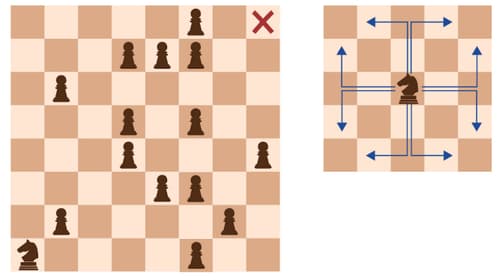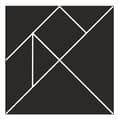Read the following information carefully and answer the questions given below:
(i) There are five types of cards viz. A, B, C, D and E. There are three cards of each type. These are to be inserted in envelopes of three colours– Red, Yellow and Brown. There are five envelopes of each colour.
(ii) B, D and E type cards are inserted in red envelopes. A, B and C type cards are to be inserted in yellow envelopes and C, D and E type cards are to be inserted in brown envelopes.
(iii) Two cards each of B and D type are inserted in red envelopes.
Which of the following combinations of the type of cards and the number of cards is definitely correct in respect of yellow coloured envelopes?
(ii) B, D and E type cards are inserted in red envelopes. A, B and C type cards are to be inserted in yellow envelopes and C, D and E type cards are to be inserted in brown envelopes.
(iii) Two cards each of B and D type are inserted in red envelopes.
Important Questions on Puzzle Test
Who among following will attend the seminar on November?
(1) Raju is shorter than Arvind
(2) Arvind is taller than Raju
Study this matrix.

In this game, there are two players. The first player can split the matrix vertically into two equal halves and choose one half for further play. The next move on this half is by the other player who will split it only horizontally and choose one half for further play. The game will continue in this manner. In the end, the last number left is the first player's gain.
If you start the game, retain the right half, and, again right half after your opponent's move, then how should your opponent play to minimise your gain?
Study the following information carefully and answer the questions given below:
(i) There are five types of cards viz. A, B, C, D and E. There are three cards of each type. These are to be inserted in envelopes of three colours – Red, Yellow and Brown. There are five envelopes of each colour.
(ii) B, D and E type cards are inserted in red envelopes. A, B and C type cards are to be inserted in yellow envelopes and C, D and E type cards are to be inserted in brown envelopes.
(iii) Two cards each of B and D types are inserted in red envelopes.
Which of the following combinations of types of cards and the number of cards and colour of the envelope is definitely correct?
A team of four players has to be selected from six players- Amit, Boman, Chetan, Deepak, Eashan and Faisal.
The following restrictions hold true.
(i) If Amit is in the team, then Faisal must be in the team.
(ii) Boman and Eashan cannot be together in the team.
(iii) Chetan and Deepak cannot be together in the team.
Which of the following teams is possible?
In a given version of chess, no piece can capture another piece. Instead, each piece is on a mission. In the scenario shown in the figure on the left, the knight is on a mission to the diagonally opposite square marked by . Assuming that no other piece moves, what is the minimum number of moves it will take the knight to reach there? (Note: In chess, the knight moves as shown in the figure on the right. The knight cannot land on any square that has a pawn, but can jump over it.)

Which of the following compositions is possible by rearranging pieces of Tangram puzzle (Sample given on the left)? Rotation of the pieces is allowed but flipping and scaling are not allowed.

During a game of five-card draw poker, played with a standard deck, you are dealt a hand with the fol- lowing characteristics:
• It contains no aces or faces cards. • No two cards have the same value.
• All four suits are present.
• The total value of the odd cards equals the total value of the even cards.
• There are no three-card straights.
• The total value of the black cards is .
• The total value of the hearts is 1(d)
• The card with the lowest value is a spade.
Exactly what are the five cards in your hand?
Read the following information carefully and answer the questions given below:
(i) There are five types of cards viz. A, B, C, D and E. There are three cards of each type. These are to be inserted in envelopes of three colours– Red, Yellow and Brown. There are five envelopes of each colour.
(ii) B, D and E type cards are inserted in red envelopes. A, B and C type cards are to be inserted in yellow envelopes and C, D and E type cards are to be inserted in brown envelopes.
(iii) Two cards each of B and D type are inserted in red envelopes.
Which of the following combinations of the colour of the envelope and the number of cards is definitely correct in respect of E-type cards?

